Manchikanti L., Pampati V., Hirsch JA. 2016. Utilization of interventional techniques in managing chronic pain in medicare population from 2000 to 2014: an analysis of patterns of utilization. Pain Physician. 19:E531–46. PMID:
27228520.
Boswell MV., Shah RV., Everett CR., Sehgal N., McKenzie Brown AM AM., Abdi S, et al. 2005. Interventional techniques in the management of chronic spinal pain: evidence-based practice guidelines. Pain Physician. 8:1–47. DOI:
10.1016/B978-1-4160-2454-5.50006-0. PMID:
16850041.
Boswell MV., Trescot AM., Datta S., Schultz DM., Hansen HC., Abdi S, et al. 2007. Interventional techniques: evidence-based practice guidelines in the management of chronic spinal pain. Pain Physician. 10:7–111. PMID:
17256025.
Manchikanti L. 2006. Medicare in interventional pain management: a critical analysis. Pain Physician. 9:171–97. PMID:
16886027.
Manchikanti L. 2004. The growth of interventional pain management in the new millennium: a critical analysis of utilization in the medicare population. Pain Physician. 7:465–82. PMID:
16858489.
Manchikanti L., Singh V., Pampati V., Damron KS., Barnhill RC., Beyer C, et al. 2001. Evaluation of the relative contributions of various structures in chronic low back pain. Pain Physician. 4:308–16. PMID:
16902676.
Schwarzer AC., Wang SC., Bogduk N., McNaught PJ., Laurent R. 1995. Prevalence and clinical features of lumbar zygapophysial joint pain: a study in an Australian population with chronic low back pain. Ann Rheum Dis. 54:100–6. DOI:
10.1136/ard.54.2.100. PMID:
7702395. PMCID:
PMC1005530.
Woodburne RT., Burkel WE. 1994. Essentials of human anatomy. . 9th ed. Oxford University Press;Oxford: p. 347.
Soames RW. Gray H, Williams PL, Bannister LH, editors. 1995. Skeletal system. Gray's Anatomy. 38th ed. Churchill Livingstone;New York: p. 425–736.
Rosse C., Gaddum-Rosse P., Hollinshead WH. 1997. Hollinshead's textbook of anatomy. . 5th ed. Lippincott-Raven;Philadelphia: p. 126–7.
Engel R., Bogduk N. 1982. The menisci of the lumbar zygapophysial joints. J Anat. 135:795–809. PMID:
7183677. PMCID:
1169447.
Glover JR. 1977. Arthrography of the joints of the lumbar vertebral arches. Orthop Clin North Am. 8:37–42. PMID:
854275.
Pedersen HE., Blunck CF., Gardner E. 1956. The anatomy of lumbosacral posterior rami and meningeal branches of spinal nerve (sinu-vertebral nerves); with an experimental study of their functions. J Bone Joint Surg Am. 38-A:377–91. DOI:
10.2106/00004623-195638020-00015. PMID:
13319400.
Suseki K., Takahashi Y., Takahashi K., Chiba T., Tanaka K., Morinaga T, et al. 1997. Innervation of the lumbar facet joints. Origins and functions. Spine (Phila Pa 1976). 22:477–85. DOI:
10.1097/00007632-199703010-00003. PMID:
9076878.
Gabella G. Gray H, Williams PL, Bannister LH, editors. 1995. Cardiovascular system. Gray's Anatomy. 38th ed. Churchill Livingstone;New York: p. 1558.
Boswell MV., Singh V., Staats PS., Hirsch JA. 2003. Accuracy of precision diagnostic blocks in the diagnosis of chronic spinal pain of facet or zygapophysial joint origin. Pain Physician. 6:449–56. PMID:
16871297.
Cavanaugh JM., Lu Y., Chen C., Kallakuri S. 2006. Pain generation in lumbar and cervical facet joints. J Bone Joint Surg Am. 88(Suppl 2):63–7. DOI:
10.2106/JBJS.E.01411. PMID:
16595446.
Manchikanti L., Pampati V., Fellows B., Bakhit CE. 1999. Prevalence of lumbar facet joint pain in chronic low back pain. Pain Physician. 2:59–64. PMID:
16906217.
Marks R. 1989. Distribution of pain provoked from lumbar facet joints and related structures during diagnostic spinal infiltration. Pain. 39:37–40. DOI:
10.1016/0304-3959(89)90173-5. PMID:
2530485.
Windsor RE., King FJ., Roman SJ., Tata NS., Cone-Sullivan LA., Thampi S, et al. 2002. Electrical stimulation induced lumbar medial branch referral patterns. Pain Physician. 5:347–53. PMID:
16886011.
Sehgal N., Dunbar EE., Shah RV., Colson J. 2007. Systematic review of diagnostic utility of facet (zygapophysial) joint injections in chronic spinal pain: an update. Pain Physician. 10:213–28. PMID:
17256031.
Borenstein D. 2004. Does osteoarthritis of the lumbar spine cause chronic low back pain? Curr Pain Headache Rep. 8:512–7. DOI:
10.1007/s11916-004-0075-z. PMID:
15509467.
Igarashi A., Kikuchi S., Konno S., Olmarker K. 2004. Inflammatory cytokines released from the facet joint tissue in degenerative lumbar spinal disorders. Spine (Phila Pa 1976). 29:2091–5. DOI:
10.1097/01.brs.0000141265.55411.30. PMID:
15454697.
Hadley LA. 1961. Anatomico-roentgenographic studies of the posterior spinal articulations. Am J Roentgenol Radium Ther Nucl Med. 86:270–6. PMID:
13710344.
Twomey LT. 1992. A rationale for the treatment of back pain and joint pain by manual therapy. Phys Ther. 72:885–92. DOI:
10.1093/ptj/72.12.885. PMID:
1454864.
Cavanaugh JM., Ozaktay AC., Yamashita HT., King AI. 1996. Lumbar facet pain: biomechanics, neuroanatomy and neurophysiology. J Biomech. 29:1117–29. DOI:
10.1016/0021-9290(96)00023-1. PMID:
8872268.
Grönblad M., Korkala O., Konttinen YT., Nederström A., Hukkanen M., Tolvanen E, et al. 1991. Silver impregnation and immunohistochemical study of nerves in lumbar facet joint plical tissue. Spine (Phila Pa 1976). 16:34–8. DOI:
10.1097/00007632-199101000-00006. PMID:
1825893.
Kang YM., Choi WS., Pickar JG. 2002. Electrophysiologic evidence for an intersegmental reflex pathway between lumbar paraspinal tissues. Spine (Phila Pa 1976). 27:E56–63. DOI:
10.1097/00007632-200202010-00005. PMID:
11805709.
Schwarzer AC., Wang SC., O'Driscoll D., Harrington T., Bogduk N., Laurent R. 1995. The ability of computed tomography to identify a painful zygapophysial joint in patients with chronic low back pain. Spine (Phila Pa 1976). 20:907–12. DOI:
10.1097/00007632-199504150-00005. PMID:
7644955.
Magora A., Bigos SJ., Stolov WC., Tomsli MA., Magora F., Vatine JJ. 1994. The significance of medical imaging findings in low back pain. Pain Clinic. 7:99–105.
Weishaupt D., Zanetti M., Hodler J., Boos N. 1998. MR imaging of the lumbar spine: prevalence of intervertebral disk extrusion and sequestration, nerve root compression, end plate abnormalities, and osteoarthritis of the facet joints in asymptomatic volunteers. Radiology. 209:661–6. DOI:
10.1148/radiology.209.3.9844656. PMID:
9844656.
Manchikanti L., Boswell MV., Singh V., Pampati V., Damron KS., Beyer CD. 2004. Prevalence of facet joint pain in chronic spinal pain of cervical, thoracic, and lumbar regions. BMC Musculoskelet Disord. 5:15. DOI:
10.1186/1471-2474-5-15. PMID:
15169547. PMCID:
PMC441387.
Goldthwait JE. 1911. The lumbo-sacral articulation. An explanation of many cases of "Lumbago," "Sciatica" and Paraplegia. Boston Med Surg J. 164:365–72. DOI:
10.1056/NEJM191103161641101.
Ghormley RK. 1933. Low back pain. With special reference to the articular facets, with presentation of an operative procedure. JAMA. 101:1773–7. DOI:
10.1001/jama.1933.02740480005002.
Badgley CE. 1941. The articular facets in relation to low-back pain and sciatic radiation. J Bone Joint Surg. 23:481–96.
Hirsch C., Ingelmark BE., Miller M. 1963. The anatomical basis for low back pain. Studies on the presence of sensory nerve endings in ligamentous, capsular and intervertebral disc structures in the human lumbar spine. Acta Orthop Scand. 33:1–17. DOI:
10.3109/17453676308999829. PMID:
13961170.
McCall IW., Park WM., O'Brien JP. 1979. Induced pain referral from posterior lumbar elements in normal subjects. Spine (Phila Pa 1976). 4:441–6. DOI:
10.1097/00007632-197909000-00009. PMID:
161074.
Fukui S., Ohseto K., Shiotani M., Ohno K., Karasawa H., Naganuma Y. 1997. Distribution of referred pain from the lumbar zygapophyseal joints and dorsal rami. Clin J Pain. 13:303–7. DOI:
10.1097/00002508-199712000-00007. PMID:
9430810.
Kaplan M., Dreyfuss P., Halbrook B., Bogduk N. 1998. The ability of lumbar medial branch blocks to anesthetize the zygapophysial joint. A physiologic challenge. Spine (Phila Pa 1976). 23:1847–52. DOI:
10.1097/00007632-199809010-00008. PMID:
9762741.
Dreyfuss P., Schwarzer AC., Lau P., Bogduk N. 1997. Specificity of lumbar medial branch and L5 dorsal ramus blocks. A computed tomography study. Spine (Phila Pa 1976). 22:895–902. DOI:
10.1097/00007632-199704150-00013. PMID:
9127924.
Barnsley L., Lord S., Bogduk N. 1993. Comparative local anaesthetic blocks in the diagnosis of cervical zygapophysial joint pain. Pain. 55:99–106. DOI:
10.1016/0304-3959(93)90189-V. PMID:
8278215.
Lord SM., Barnsley L., Bogduk N. 1995. The utility of comparative local anesthetic blocks versus placebo-controlled blocks for the diagnosis of cervical zygapophysial joint pain. Clin J Pain. 11:208–13. DOI:
10.1097/00002508-199509000-00008. PMID:
8535040.
Datta S., Lee M., Falco FJ., Bryce DA., Hayek SM. 2009. Systematic assessment of diagnostic accuracy and therapeutic utility of lumbar facet joint interventions. Pain Physician. 12:437–60. PMID:
19305489.
Bogduk N. 1997. International Spinal Injection Society guidelines for the performance of spinal injection procedures. Part 1: zygapophysial joint blocks. Clin J Pain. 13:285–302. DOI:
10.1097/00002508-199712000-00006. PMID:
9430809.
Manchikanti L., Boswell MV., Singh V., Benyamin RM., Fellows B., Abdi S, et al. 2009. Comprehensive evidence-based guidelines for interventional techniques in the management of chronic spinal pain. Pain Physician. 12:699–802. PMID:
19644537.
Manchikanti L., Datta S., Derby R., Wolfer LR., Benyamin RM., Hirsch JA. 2010. A critical review of the American Pain Society clinical practice guidelines for interventional techniques: part 1. diagnostic interventions. Pain Physician. 13:E141–74. PMID:
20495596.
Manchikanti L., Datta S., Gupta S., Munglani R., Bryce DA., Ward SP, et al. 2010. A critical review of the American Pain Society clinical practice guidelines for interventional techniques: part 2. Therapeutic interventions. Pain Physician. 13:E215–64. PMID:
20648212.
Chou R., Atlas SJ., Stanos SP., Rosenquist RW. 2009. Nonsurgical interventional therapies for low back pain: a review of the evidence for an American Pain Society clinical practice guideline. Spine (Phila Pa 1976). 34:1078–93. DOI:
10.1097/BRS.0b013e3181a103b1. PMID:
19363456.
Manchikanti L., Kaye AD., Boswell MV., Bakshi S., Gharibo CG., Grami V, et al. 2015. A systematic review and best evidence synthesis of the effectiveness of therapeutic facet joint interventions in managing chronic spinal pain. Pain Physician. 18:E535–82. PMID:
26218948.
Manchikanti L., Malla Y., Wargo BW., Cash KA., Pampati V., Fellows B. 2012. Complications of fluoroscopically directed facet joint nerve blocks: a prospective evaluation of 7,500 episodes with 43,000 nerve blocks. Pain Physician. 15:E143–50. PMID:
22430660.
Schulte TL., Pietilä TA., Heidenreich J., Brock M., Stendel R. 2006. Injection therapy of lumbar facet syndrome: a prospective study. Acta Neurochir (Wien). 148:1165–72. DOI:
10.1007/s00701-006-0897-z. PMID:
17039302.
Shih C., Lin GY., Yueh KC., Lin JJ. 2005. Lumbar zygapophyseal joint injections in patients with chronic lower back pain. J Chin Med Assoc. 68:59–64. DOI:
10.1016/S1726-4901(09)70136-4. PMID:
15759816.
Kim S., Lee JW., Chai JW., Lee GY., You JY., Kang HS, et al. 2015. Fluoroscopy-guided intra-articular facet joint steroid injection for the management of low back pain: therapeutic effectiveness and arthrographic pattern. J Korean Soc Radiol. 73:172–80. DOI:
10.3348/jksr.2015.73.3.172.
Carette S., Marcoux S., Truchon R., Grondin C., Gagnon J., Allard Y, et al. 1991. A controlled trial of corticosteroid injections into facet joints for chronic low back pain. N Engl J Med. 325:1002–7. DOI:
10.1056/NEJM199110033251405. PMID:
1832209.
Fuchs S., Erbe T., Fischer HL., Tibesku CO. 2005. Intraarticular hyaluronic acid versus glucocorticoid injections for nonradicular pain in the lumbar spine. J Vasc Interv Radiol. 16:1493–8. DOI:
10.1097/01.RVI.0000175334.60638.3F. PMID:
16319156.
Murtagh FR. 1988. Computed tomography and fluoroscopy guided anesthesia and steroid injection in facet syndrome. Spine (Phila Pa 1976). 13:686–9. DOI:
10.1097/00007632-198813060-00017. PMID:
2972074.
Destouet JM., Gilula LA., Murphy WA., Monsees B. 1982. Lumbar facet joint injection: indication, technique, clinical correlation, and preliminary results. Radiology. 145:321–5. DOI:
10.1148/radiology.145.2.6215674. PMID:
6215674.
Celik B., Er U., Simsek S., Altug T., Bavbek M. 2011. Effectiveness of lumbar zygapophysial joint blockage for low back pain. Turk Neurosurg. 21:467–70. DOI:
10.5137/1019-5149.JTN.4057-10.1. PMID:
22194101.
Anand S., Butt MS. 2007. Patients' response to facet joint injection. Acta Orthop Belg. 73:230–3. PMID:
17515236.
Bani A., Spetzger U., Gilsbach JM. 2002. Indications for and benefits of lumbar facet joint block: analysis of 230 consecutive patients. Neurosurg Focus. 13:E11. DOI:
10.3171/foc.2002.13.2.12. PMID:
15916395.
Falco FJ., Manchikanti L., Datta S., Sehgal N., Geffert S., Onyewu O, et al. 2012. An update of the effectiveness of therapeutic lumbar facet joint interventions. Pain Physician. 15:E909–53. PMID:
23159980.
Cohen SP., Doshi TL., Constantinescu OC., Zhao Z., Kurihara C., Larkin TM, et al. 2018. Effectiveness of lumbar facet joint blocks and predictive value before radiofrequency denervation: the facet treatment study (FACTS), a randomized, controlled clinical trial. Anesthesiology. 129:517–35. DOI:
10.1097/ALN.0000000000002274. PMID:
29847426. PMCID:
PMC6543534.
Galiano K., Obwegeser AA., Bodner G., Freund M., Maurer H., Kamelger FS, et al. 2005. Ultrasound guidance for facet joint injections in the lumbar spine: a computed tomography-controlled feasibility study. Anesth Analg. 101:579–83. DOI:
10.1213/01.ANE.0000158609.64417.93. PMID:
16037179.
Narouze SN. 2010. Ultrasound-guided interventional procedures in pain management: evidence-based medicine. Reg Anesth Pain Med. 35(2 Suppl):S55–8. DOI:
10.1097/AAP.0b013e3181d24658. PMID:
20216026.




 PDF
PDF Citation
Citation Print
Print



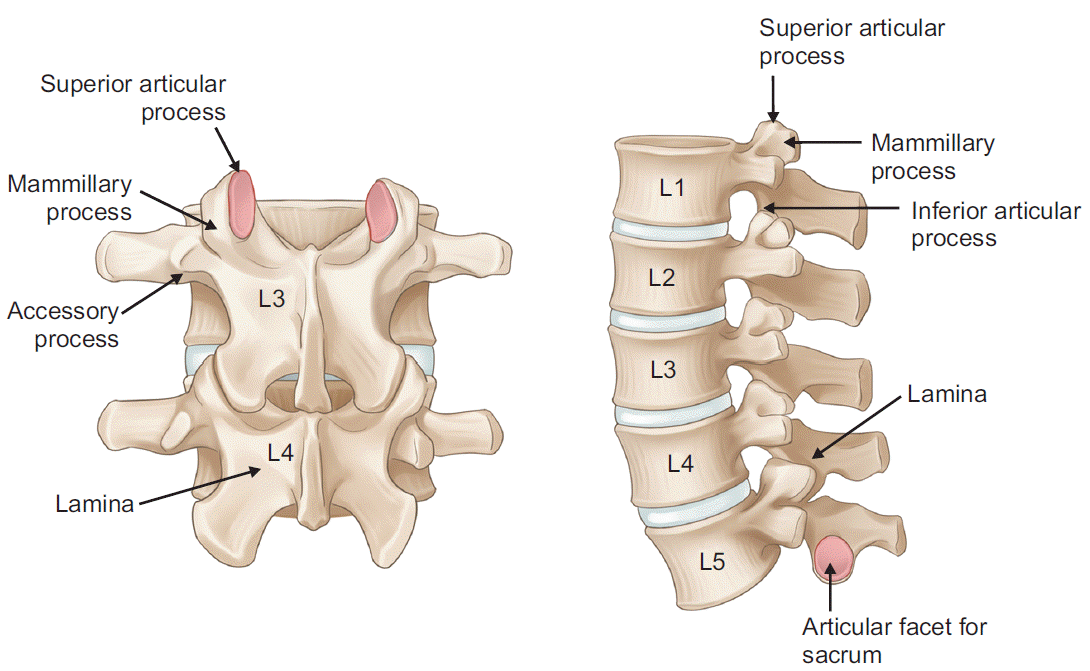
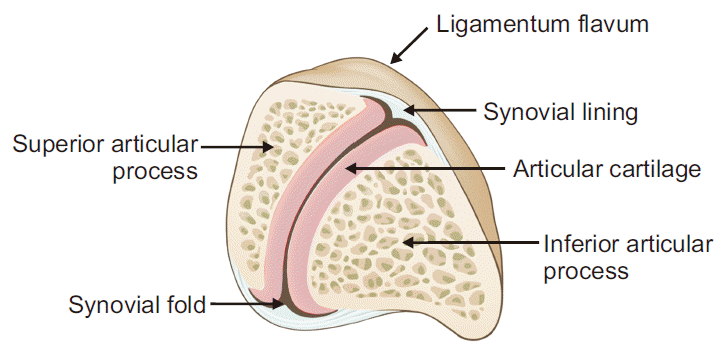
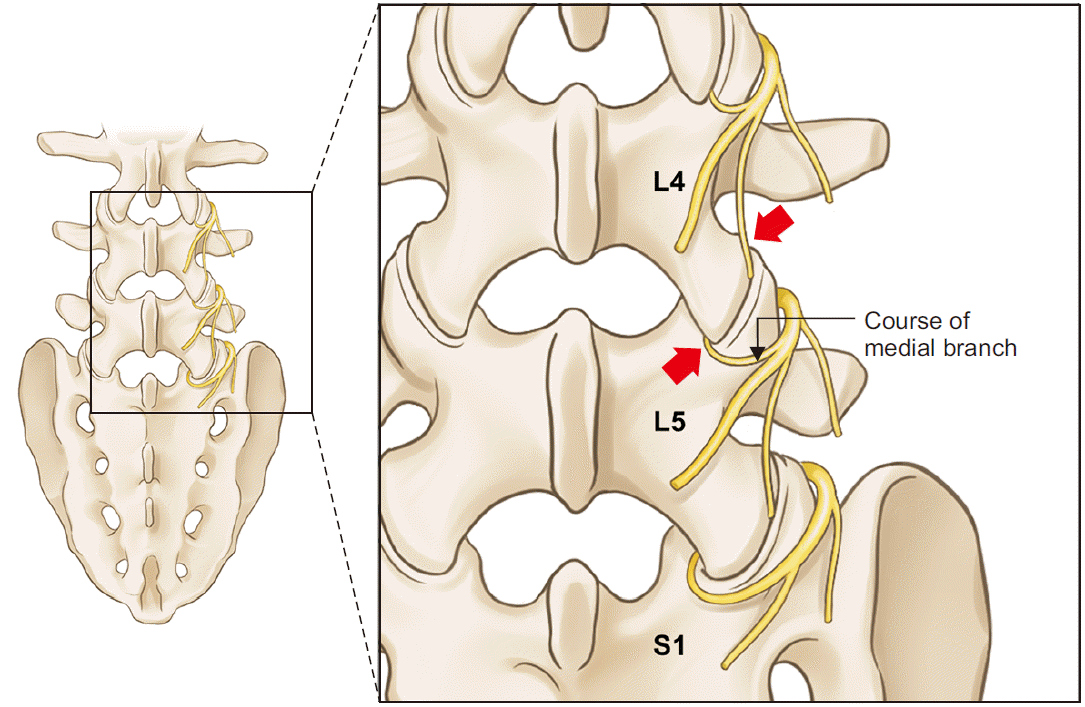
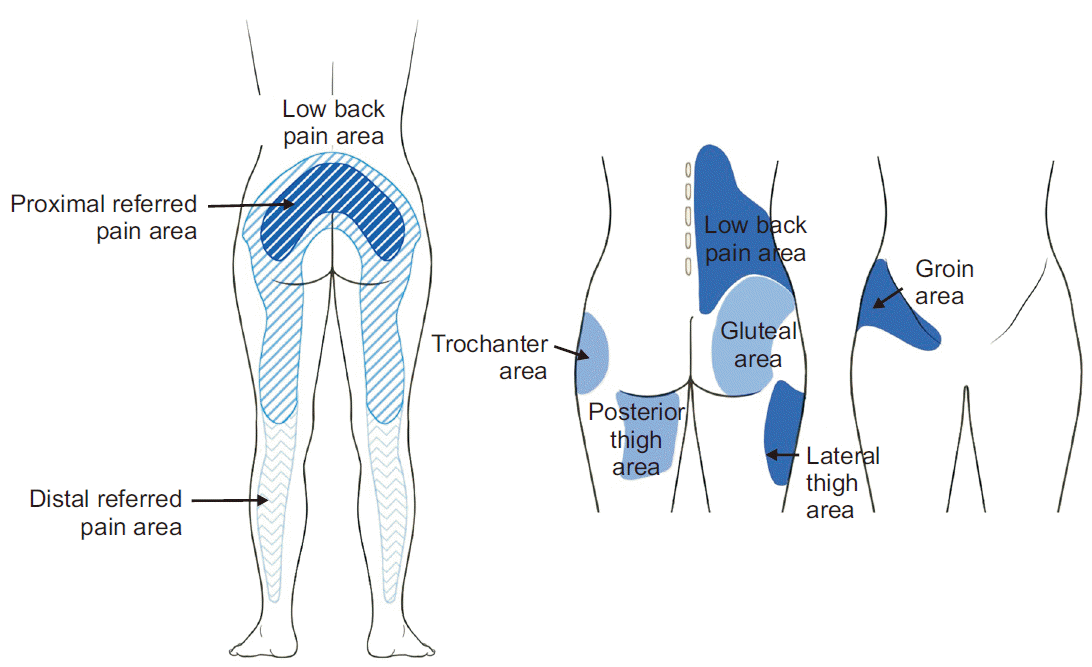
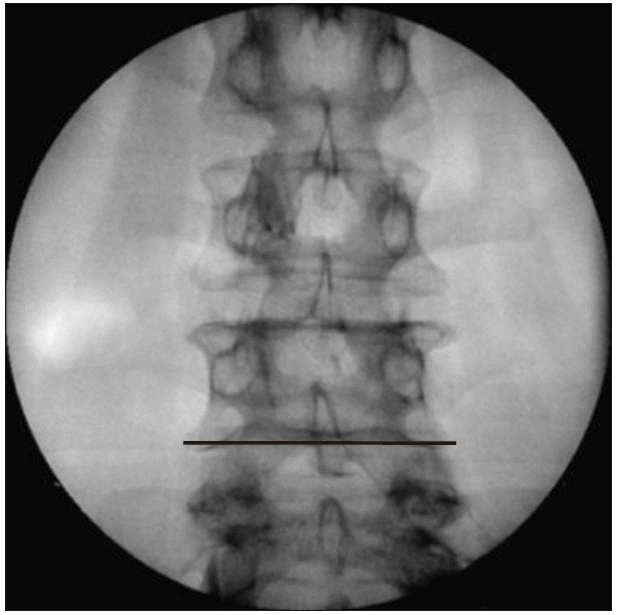
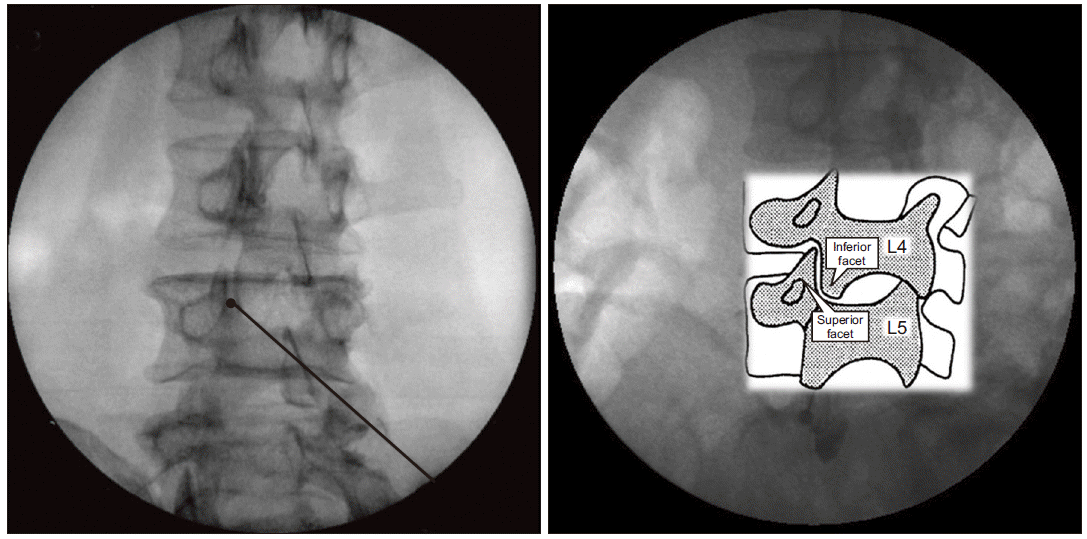
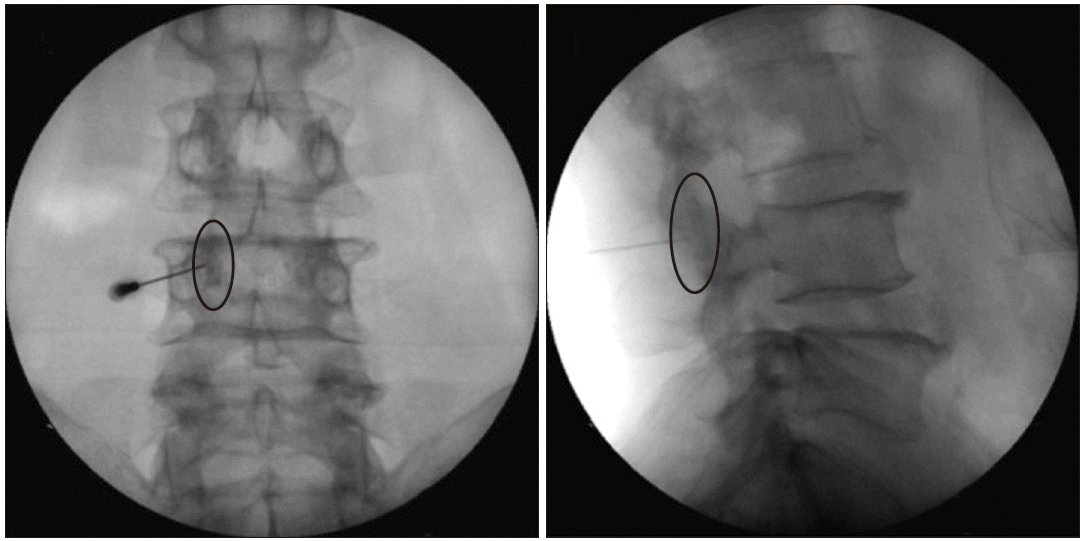
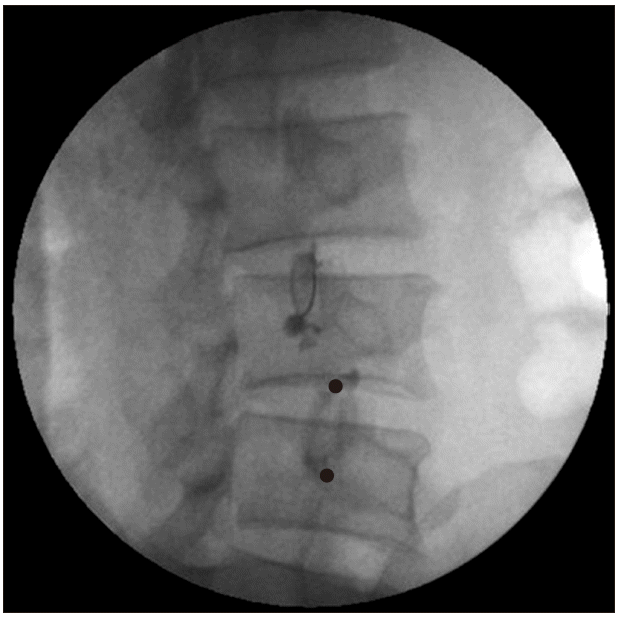
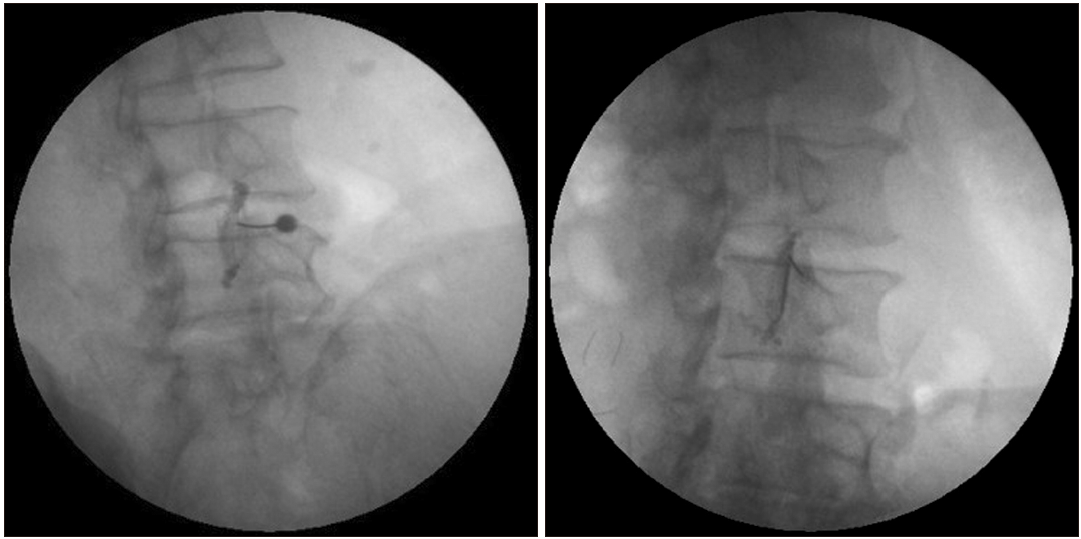
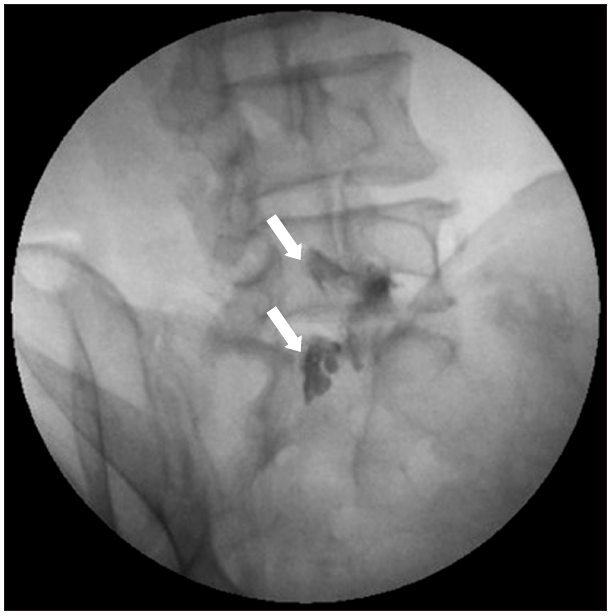
 XML Download
XML Download